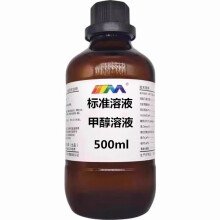Formic Acid/CH2O2/CAS: 64-18-6
What is Formic Acid?
Formic acid, also known as methanoic acid, holds a unique position as the simplest carboxylic acid. With a chemical formula of HCOOH, this colorless liquid is known for its sharp, pungent smell. But what makes it so interesting? It’s not only a key player in nature but also has a wide range of practical uses in industries. Let’s explore its chemistry, natural sources, and properties.
Chemical Composition and Structure
Formic acid’s chemical structure is deceptively simple, represented by the formula HCOOH. It is part of the carboxylic acid group, characterized by the presence of a carboxyl group (-COOH). The structure consists of just one hydrogen atom, one carbon atom, and two oxygen atoms.
Its small molecular size and straightforward design make it remarkably reactive. This simplicity allows formic acid to easily interact in many chemical processes, enhancing its utility in industrial applications.
To learn more about its detailed chemical composition, visit the PubChem database entry for Formic Acid.
Natural Sources of Formic Acid
Did you know that formic acid gets its name from ants? The term “formic” comes from the Latin word formica, meaning ant. These tiny creatures produce and release this acid as a defensive mechanism. However, ants aren’t the only source.
Formic acid is also found in:
- Insect stings: Bees and wasps release formic acid in their venom.
- Plant emissions: Some plants use formic acid as a natural deterrent against herbivores.
- Atmospheric processes: Certain chemical reactions in the air generate this compound, playing a role in chemical balance.
For detailed insights into its natural existence, Wikipedia’s section on Formic Acid Sources offers comprehensive information.
Key Physical and Chemical Properties
Formic acid is as versatile as it is fascinating, thanks to its distinct physical and chemical traits. Here’s a quick breakdown of its core properties:
- Melting Point: 8.4°C (47.1°F)
- Boiling Point: 100.8°C (213.4°F), almost like water’s boiling point, making it easy to handle in various applications.
- Solubility: Highly soluble in water, as well as in many organic solvents like ethanol.
- Acidity (pKa): A pKa value of 3.75, indicating its high acidity relative to other carboxylic acids.
These features make formic acid a widely sought chemical for industrial and laboratory use. The NIOSH Pocket Guide provides a detailed overview of its specifications and safety considerations.
Formic acid’s unique combination of simplicity, abundance, and properties underscores why it remains a staple chemical, both in nature and within industries. Keep reading to learn about its fascinating applications and the role it plays in modern chemistry!

Industrial Production of Formic Acid
The production of formic acid has evolved significantly to meet growing industrial demands. It’s primarily synthesized through chemical processes that optimize efficiency and scalability. Here’s a closer look at the key methods and variants available today.
Methanol-Based Production
One of the most common methods for industrial formic acid production involves methanol. This process is efficient and widely used in industries worldwide.
The procedure typically comprises these steps:
- Methanol Carbonylation: Methanol reacts with carbon monoxide in the presence of a catalyst to form methyl formate.
- Hydrolysis of Methyl Formate: Methyl formate is then hydrolyzed to produce formic acid and methanol.
This method is cost-effective due to the abundant availability of methanol and the simplicity of the reactions. For a deeper look at this production process, check out the Wikipedia entry on formic acid.
Alternative Production Methods
Apart from methanol-based methods, there are other emerging techniques to produce formic acid.
- Catalytic Hydrogenation of CO2: By reacting carbon dioxide with hydrogen under pressure in the presence of a catalyst, formic acid can be generated. This method is gaining traction for its environmental benefits since it utilizes CO2 — a major greenhouse gas.
- Oxidation of Biomass: Biomass-derived compounds are oxidized to formic acid using specialized catalysts. This is another eco-friendly process but currently limited by scalability challenges.
To explore the challenges and advancements in greener formic acid production, this ACS publication provides valuable insights.
Industrial Concentrations and Variants
Formic acid is commercially available in various concentrations, depending on its intended application. The most common concentrations in the market range between 85% and 99%.
- 85% Concentration: Popular in industries like agriculture and leather processing due to its balance of strength and safety.
- 99% Concentration: Known as anhydrous formic acid, widely preferred for high-precision chemical reactions and pharmaceutical applications.
These variants support diverse industrial needs, ensuring that formic acid remains an indispensable resource for manufacturing and processing. To learn more about the chemical’s form and its industrial relevance, you may visit this PDF document on its manufacture.
Understanding these production methods and commercial varieties underscores why formic acid continues to hold a firm place across industries. Its versatility, combined with innovative production techniques, makes it a critical chemical in the modern industrial landscape.
Conclusion
Formic acid holds a unique position as a versatile chemical with wide-ranging applications across industries. Its role extends from agriculture to textiles, leather processing, and innovations in energy solutions. Its environmentally friendly properties and ongoing advancements in production methods underline its market relevance in a competitive and sustainability-driven world.
For more insights, explore additional details on formic acid applications and industrial relevance here.






